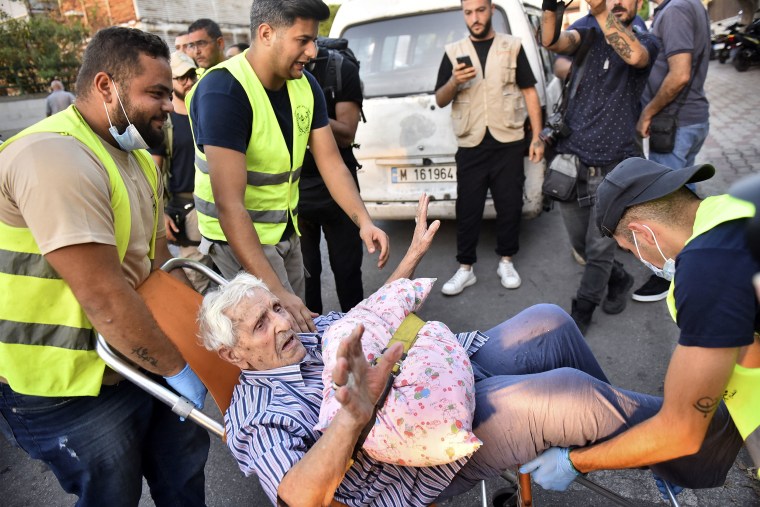Tens of thousands of people fled southern Lebanon on Tuesday as Israel continued to pound Hezbollah targets with an aerial offensive that has caused more than 550 casualties.
Hezbollah fought back by launching a new barrage of cross-border fire while Israel’s military said it would accelerate its campaign against the Iran-backed militant group.
Washington was preparing to send troops to be ready to help evacuate Americans, while dozens of international flights were canceled amid fears that the renewed clashes between Israel and Hezbollah could explode into an all-out regional conflict.
“I can say that we are almost in a full-fledged war,” European Union foreign policy chief Josep Borrell told reporters earlier. “If this is not a war situation, I don’t know what you would call it.”
In New York City, where the United Nations General Assembly was convening, the unfolding crisis in southern Lebanon was expected to top Secretary of State Antony Blinken’s agenda when he meets later Tuesday with his counterparts from the Group of Seven countries, a senior State Department official said.
Meanwhile, Israel announced Tuesday that it had “eliminated” a top Hezbollah leader named Ibrahim Kobeisi, who headed the organization’s Missiles and Rockets Force that has been attacking Israeli positions and settlements near the Lebanese border.
The main highway from southern Lebanon to Beirut was jammed as terrified residents, heeding Israeli warnings, loaded vehicles with whatever possessions they could grab and fled north.
As of Tuesday, the United Nations Refugee Agency estimated tens of thousands of Lebanese had abandoned their homes.


“We struggled a lot on the road just to get here,” Ali Hassan, who was displaced from Tyre, one of Lebanon’s largest cities, told The Associated Press. “Some of my relatives and my wife’s brothers slept on the streets because they haven’t found shelter yet, and the schools became full now.”
At the Hotel Technical Institute in Dekwaneh, a suburb southeast of Beirut, dozens of families were camped out on mattresses in classrooms as workers for Caritas, a Catholic relief organization, distributed food and other necessities.
While the school echoed at times with the sounds of children playing in the hallways, shell-shocked and clearly exhausted adults could be seen smoking cigarettes in the shade of the covered entryway.
UNICEF warned Tuesday that further escalation in the conflict would be “catastrophic” for children and families in Lebanon.
Nearly 500 people were killed in Lebanon on Monday, according to local health officials. By Tuesday, the death toll had risen to at least 558, including at least 50 children and 94 women, with at least 1,835 people injured, according to the Lebanese health ministry.
In addition, six more people were killed and another 15 were injured in what the Israelis called a “targeted strike” in the southern suburbs of Beirut, the Lebanese health ministry reported.
The bombardment of southern Lebanon began after Israeli intelligence stunned the militant group by detonating pagers and walkie-talkies filled with explosives that it had secretly supplied to members.
That was followed by an airstrike Friday that killed at least 45 people, including two senior Hezbollah members, in a densely populated suburb of Beirut.


The IDF said it struck a number of locations that belonged to Hezbollah in waves of strikes early Tuesday and later said it had conducted the strike in Beirut.
“We must not give Hezbollah a break,” Israeli military Chief of Staff Herzi Halevi said during a morning assessment.
Israel and Hezbollah have been bombarding each other since the Oct. 7 terrorist attack by Hamas sparked Israel’s invasion of Gaza. Many experts agree neither Israel nor Iran wants a full-blown direct conflict, but they fear escalating strikes may lead to one.
The U.S. has not embraced the Israeli strategy against Hezbollah, a senior state department official told NBC News.
Asked whether Israel might launch a ground invasion of Lebanon, the official said it was “important to take Israeli preparation seriously,” and stressed that the U.S. does not believe such a move would reduce violence in the region.






